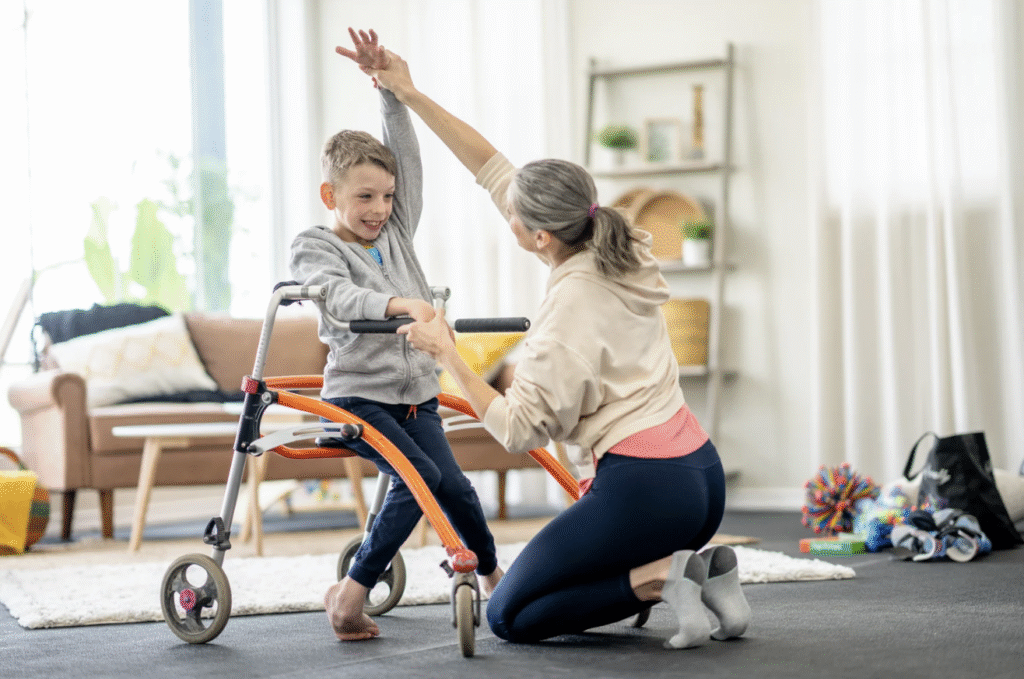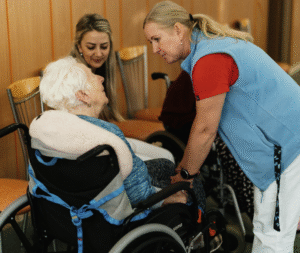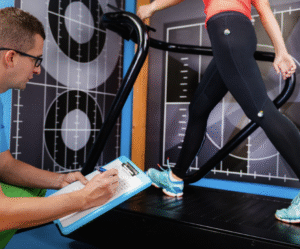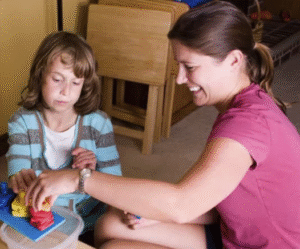Why do some kids walk on their toes, and how can we correct it?
Toe walking is defined as the inability to make heel contact, which promotes a forefoot (area near the ball of your foot) to forefoot, or toe to toe, walking pattern. Toe walking can be caused by different neurological disorders or musculature disorders such as cerebral palsy or Duchenne musculature dystrophy.
Idiopathic toe walking (where someone walks on their toes for over 3 years) is the most common form of toe walking, and can be caused by disorders such as autism or other neurological conditions.
Studies have shown that children show signs of idiopathic toe walking typically as soon as they begin walking. In most cases, these children only toe walk intermittently, as they are able to stand with flat feet and perform a heel strike when asked. Additionally, those with idiopathic toe walking typically have normal muscle tone, reflexes, and strength for their developmental age group.
Toe walking has been shown to be linked to hypersensitivity (higher than normal sensitivity to things) or hyposensitivity (lower than normal sensitivity to things). For example, a child may be sensitive to how different surfaces feel under their feet, causing them to rise up onto their toes to walk.
Some questions to ask yourself if you notice your child toe walking:
1. When do you notice them toe walking?
2. Are they wearing shoes or no shoes?
3. Do different types of surfaces cause them to walk on their toes more than others (i.e. sand, grass, or carpet)?
4. Can your child achieve full range of motion in their ankle?
If any of the above questions catch your attention, please speak with a physical therapist. They will be able to assess your child, and if there are signs of toe walking, there are many different treatments physical therapists can do that will address it.
This involves lengthening (stretching) the Gastrocnemius and Soleus muscles, which are what contract to bring your child up onto their toes. The therapist will bring your child’s toes up into dorsiflexion (gently moving toes upwards towards face) until they feel resistance. They will then hold this position for several seconds to effectively stretch the muscles. This stretch can be done both with their knee bent, which stretches the Soleus muscle, and with their leg straight, which stretches the Gastrocnemius muscle.
Treatment involving active range of motion:
There are a wide range of activities that you can have your child do to facilitate bringing their toes up and putting their heels down. These activities will help your child attempt to use their whole foot to stand and balance, rather than just using their toes.
They can:
- Bear walk
- Propel forward on a scooter with their heels, pulling their body forward
- Step or jump over hurdles
- Strengthen abdominals
- Perform weight bearing squat to stands
- Climb up a slide to promote dorsiflexion
- Walk on their heels
- Stand on a dyna-disc, slant inclined disc, or a wobble board
Now, if your child has hypersensitivity, there are a few ways to encourage them to place their whole foot down and promote active range of motion. You can encourage walking around on different surfaces like grass, dirt, sand, and rugs without shoes. Additionally, using a heavier shoe with higher ankle support may encourage a flat foot position for them.
As always, if you have questions or concerns on toe walking, stretches for toe walking, activities to promote your child using their whole foot, and more, please speak with us. Our goal is to help you!
Thanks for reading!
Eva Kelley, PTA
Physical Therapist Assistant
Resources:




